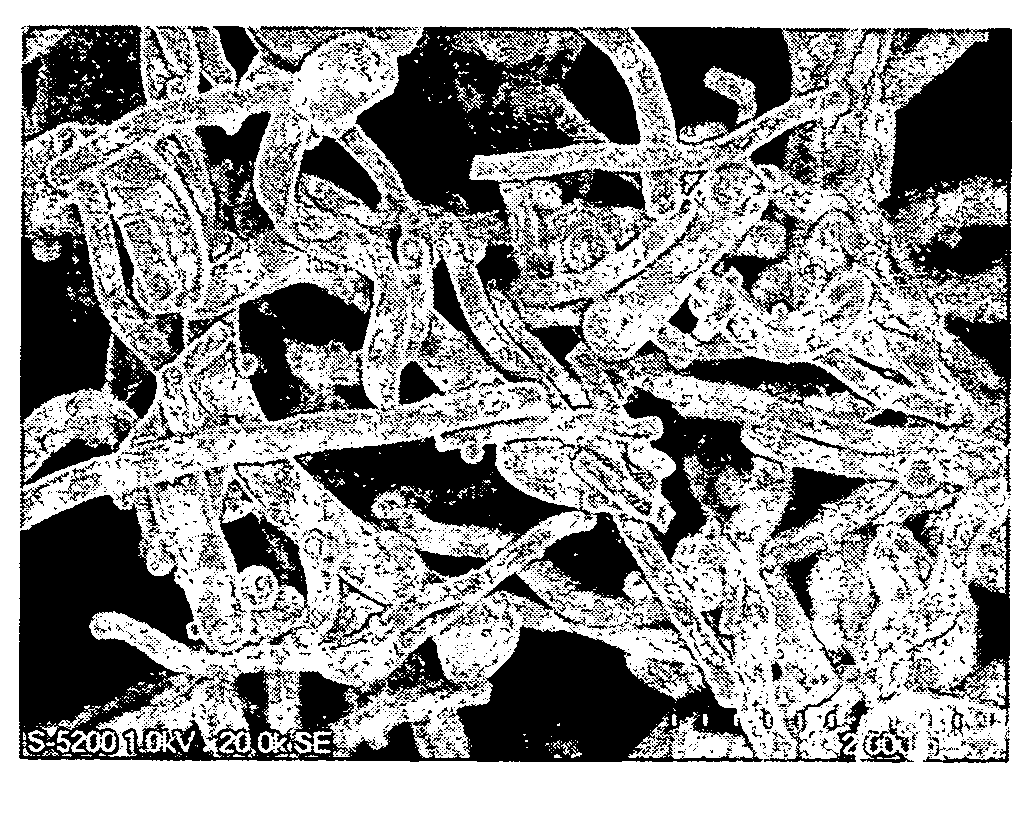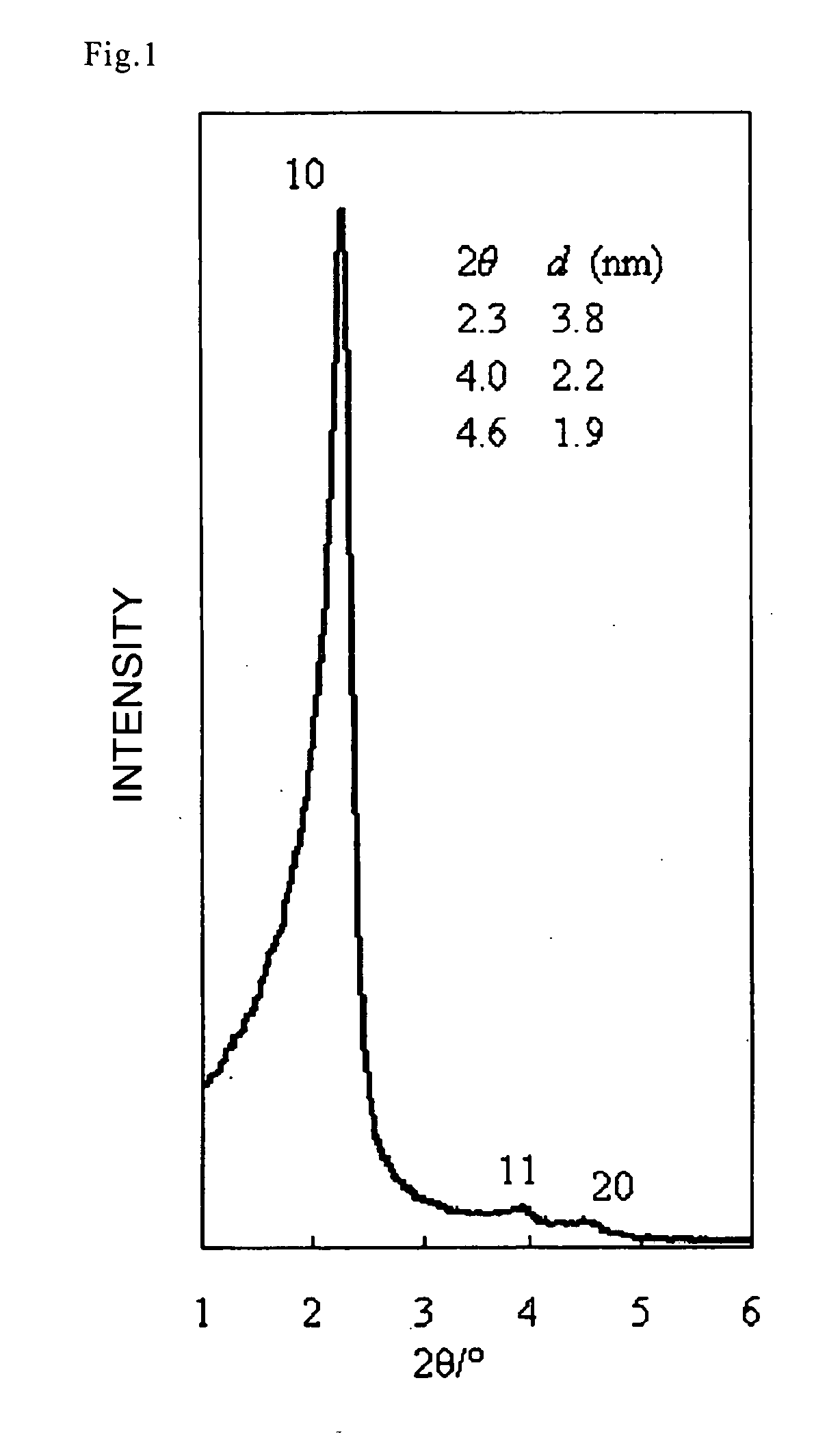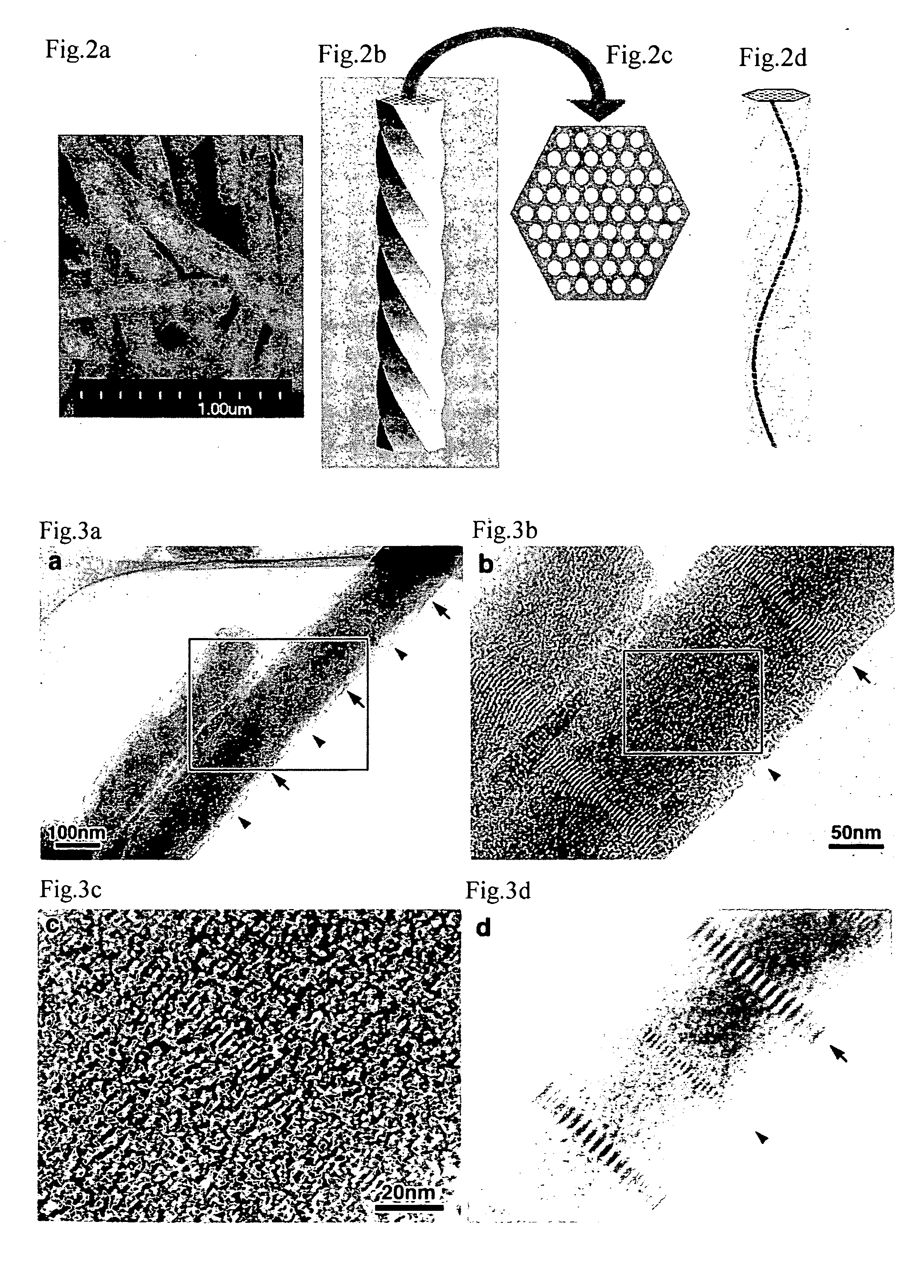Inorganic mesoporous material having chiral twisted structure and process for producing the same
a technology of organic mesoporous material and chiral twisted structure, which is applied in the direction of crystal growth process, chemical/physical process, nanostructure manufacturing, etc., can solve the problem of difficult selective synthesizing of chiral material
- Summary
- Abstract
- Description
- Claims
- Application Information
AI Technical Summary
Benefits of technology
Problems solved by technology
Method used
Image
Examples
example 1
[0076]Production of Chiral Mesoporous Silica
[0077]N-myristoyl-L-alanine sodium salt (0.32 g, 1 mmol) was dissolved in 32 g of deionized water and stirred at room temperature. 0.1M of HCl (1.4 g, 0.14 mmol) was added to the solution and stirred intensively at room temperature. After stirring for an hour, 50% methanol solution of a mixture of 1.40 g of tetraethoxysilane (TEOS) and 0.20 g of N-trimethoxysilylpropyl-N,N, N-trimethylammonium chloride (TMAPS) was added and stirred at 22° C. Then, the mixture was left alone for 2 hours at 22° C.
[0078]Further, the mixture was kept at 80° C. for 15 hours to give a chiral meso-structured product was obtained. This product was centrifuged, dried at 60° C., and a chiral mesoporous silica was obtained.
[0079]The CD (circular dichroism) of the obtained gel was measured at 22° C. in a cell of 1 cm cell-length using a spectropolarimeter (JASCO J-710). The chart of the measured CD is shown in FIG. 6.
example 2
[0080]Production of Calcinated Chiral Mesoporous Silica
[0081]By calcinating the product obtained in Example 1 at 650° C. for 6 hours, a surfactant of a template and the organic part of silane were removed to give a chiral mesoporous silica.
[0082]The x-ray diffraction of the obtained chiral mesoporous silica is shown in FIG. 1, photos of the electron microscope are shown in FIGS. 2 to 4, and a desorption and absorption curve by nitrogen is shown in FIG. 5.
example 3
[0083]Production of Chiral Metal Oxide Nano-Wire
[0084]A chiral metallic nano-wire was manufactured by a two-step process using the chiral mesoporous silica as a template.
[0085]0.15 g of chiral mesoporous silica was impregnated to metal precursors (Co(NO3)2.6H2O and [Pt(NH3)4](NO3)) of 1.8 to 2.6 mmol in total. The Co and Pt precursors were activated by heating slowly up to 350° C. in an oxygen environment, and then each of the precursors were reduced in a hydrogen gas stream at 300° C. and 430° C. respectively.
[0086]The electron microscope photos of the obtained metallic nano-wires are shown in FIG. 8a (in the case of Co) and FIG. 8b (in the case of Pt) respectively.
PUM
| Property | Measurement | Unit |
|---|---|---|
| Concentration | aaaaa | aaaaa |
| Solubility (mass) | aaaaa | aaaaa |
| Metallic bond | aaaaa | aaaaa |
Abstract
Description
Claims
Application Information
 Login to View More
Login to View More - R&D
- Intellectual Property
- Life Sciences
- Materials
- Tech Scout
- Unparalleled Data Quality
- Higher Quality Content
- 60% Fewer Hallucinations
Browse by: Latest US Patents, China's latest patents, Technical Efficacy Thesaurus, Application Domain, Technology Topic, Popular Technical Reports.
© 2025 PatSnap. All rights reserved.Legal|Privacy policy|Modern Slavery Act Transparency Statement|Sitemap|About US| Contact US: help@patsnap.com



